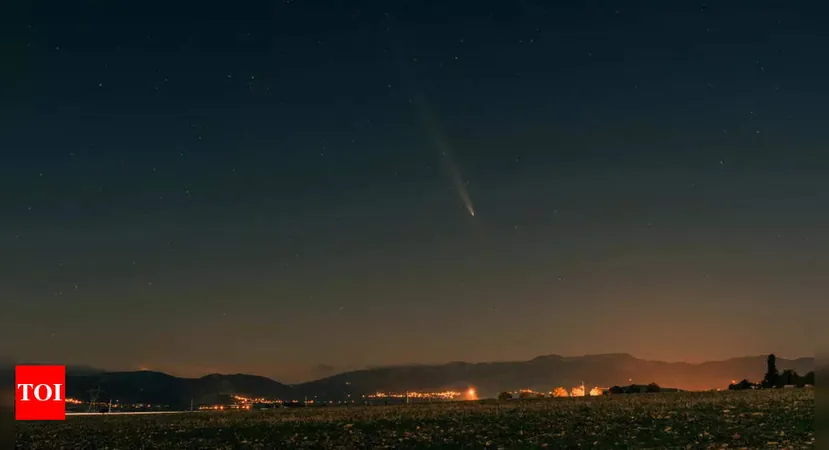
Spectacular Fireball Illuminates North American Skies: What You Need to Know!
2024-11-15
Author: Jacob
A Celestial Display in North America
Early risers in North America were treated to a breathtaking celestial display on November 13, as a dazzling fireball streaked across the early morning sky. The meteor, which lit up the atmosphere at approximately 6:30 am Mountain Standard Time (8:31 am EST or 1331 GMT), captivated thousands of witnesses in both Canada and the United States.
Eyewitness Accounts
The American Meteor Society (AMS) documented an impressive 170 eyewitness reports, with many fortunate observers capturing the event on cameras. The fireball was visible across a wide area, including regions in Alberta and Saskatchewan, Canada, as well as multiple states in the U.S. such as Montana, Idaho, Washington, Wyoming, and North Dakota. Eyewitnesses took to social media to share their experiences, showcasing the meteor's flash on doorbell cameras, dash cams, and smartphones.
Dave R. from Alberta described the event, saying, “I’ve seen (and photographed) several fireballs before, but this one was among the most spectacular I’ve seen.” Unfortunately, he missed the chance to capture it on camera as he was not photographing the Taurid meteor shower that morning.
Another observer, Kaitlynn D. from Corvallis, Montana, recounted her experience: “A bright green flash brought it to my attention. Suddenly, the surroundings lit up as if it were mid-morning, and then a little white spec continued out of sight.”
Detection from Space
What added to the intrigue of this fireball is the fact that it was also detected from space! National Oceanic and Atmospheric Administration's (NOAA) satellites, including the GOES-18 and GOES-16, recorded the meteor burning up in Earth's atmosphere. These satellites, equipped with instruments designed to detect lightning, provided extraordinary images of the fireball as it blazed through the sky.
What Causes These Phenomena?
So, what exactly causes these spectacular phenomena? Meteors are born when small fragments of meteoroids enter Earth's atmosphere at astonishing speeds. The friction with air molecules generates intense heat, vaporizing most meteoroids and creating the brilliant streaks of light visible from the ground.
Upcoming Meteor Showers
As we look forward, skywatchers should keep an eye on the upcoming Leonid meteor shower on November 16, though a bright moon may make spotting them more challenging. And for those who want to catch another incredible meteor display, December’s Geminid meteor shower is just around the corner—don’t miss it!
Stay Prepared for Celestial Wonders
Stay tuned for more updates on the skies above, and remember to have those cameras ready—you never know when the next celestial wonder might take your breath away!









 Brasil (PT)
Brasil (PT)
 Canada (EN)
Canada (EN)
 Chile (ES)
Chile (ES)
 España (ES)
España (ES)
 France (FR)
France (FR)
 Hong Kong (EN)
Hong Kong (EN)
 Italia (IT)
Italia (IT)
 日本 (JA)
日本 (JA)
 Magyarország (HU)
Magyarország (HU)
 Norge (NO)
Norge (NO)
 Polska (PL)
Polska (PL)
 Schweiz (DE)
Schweiz (DE)
 Singapore (EN)
Singapore (EN)
 Sverige (SV)
Sverige (SV)
 Suomi (FI)
Suomi (FI)
 Türkiye (TR)
Türkiye (TR)